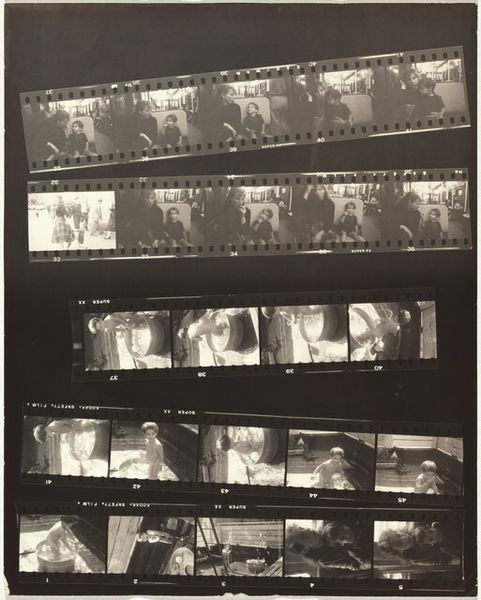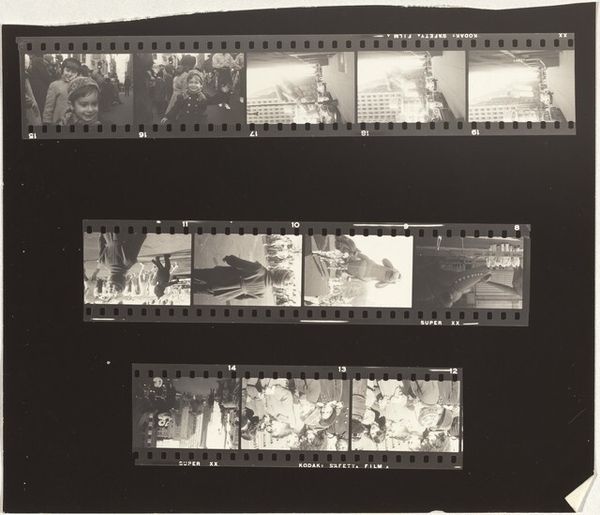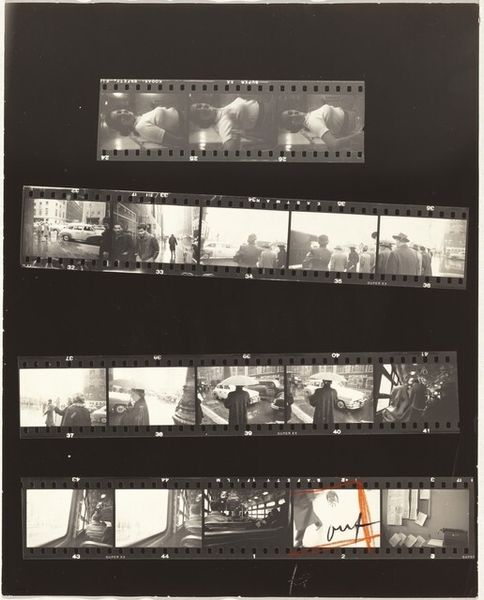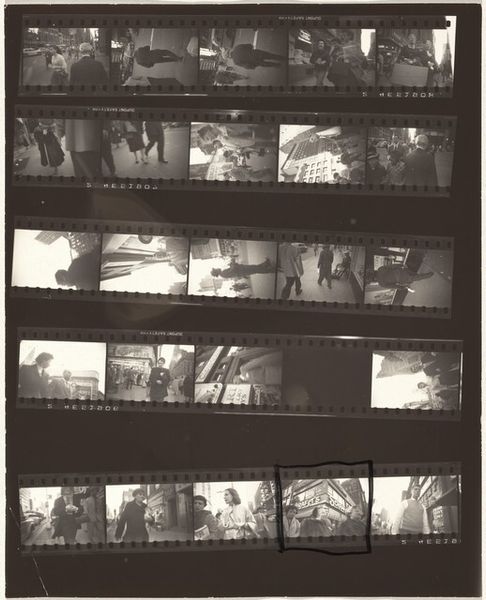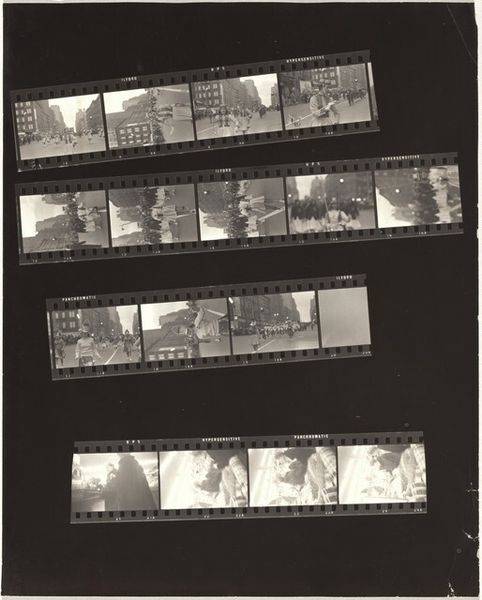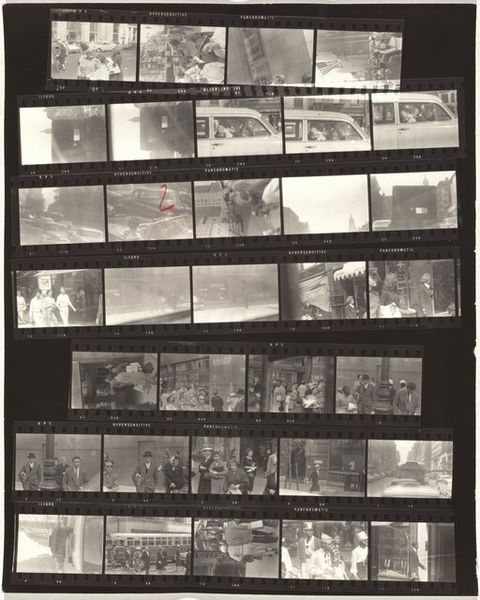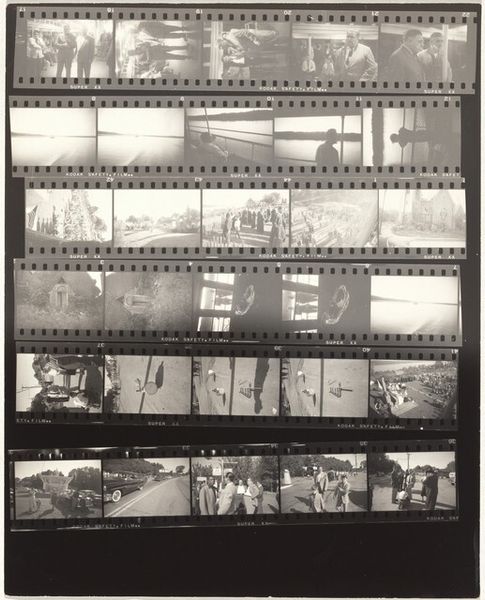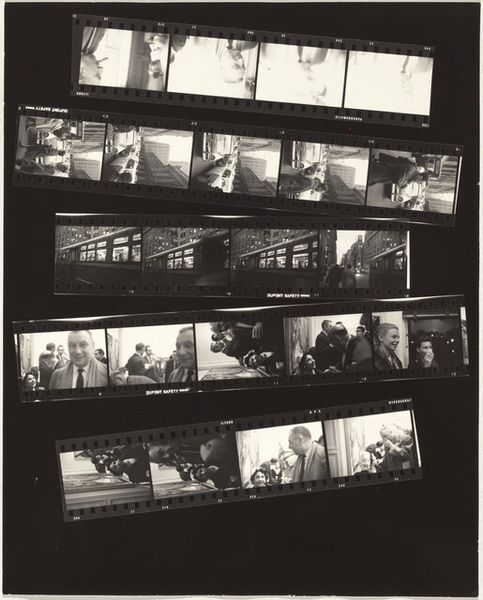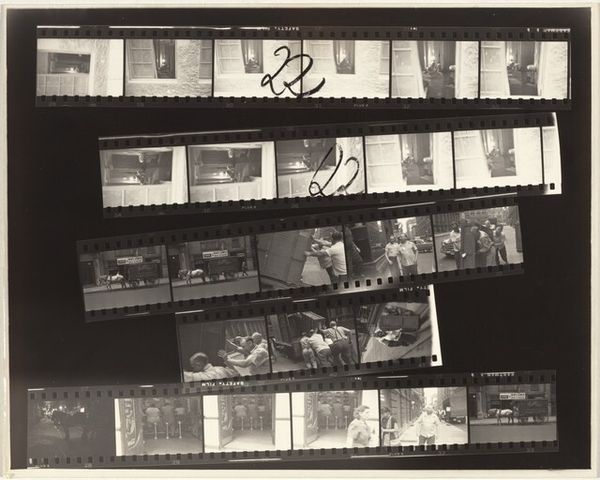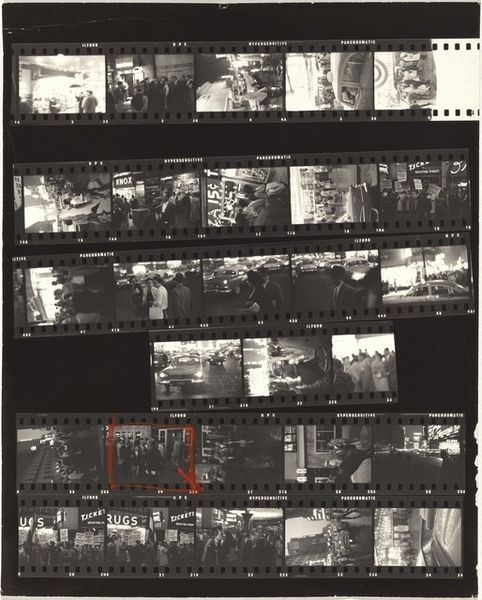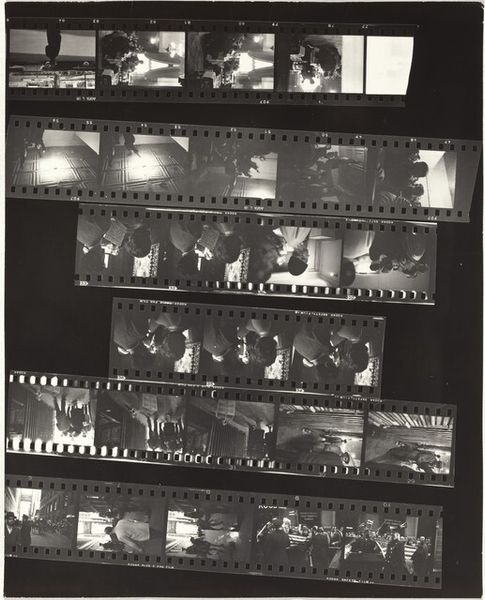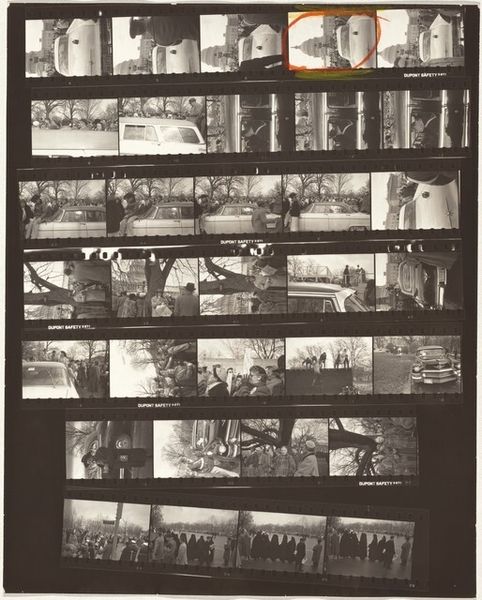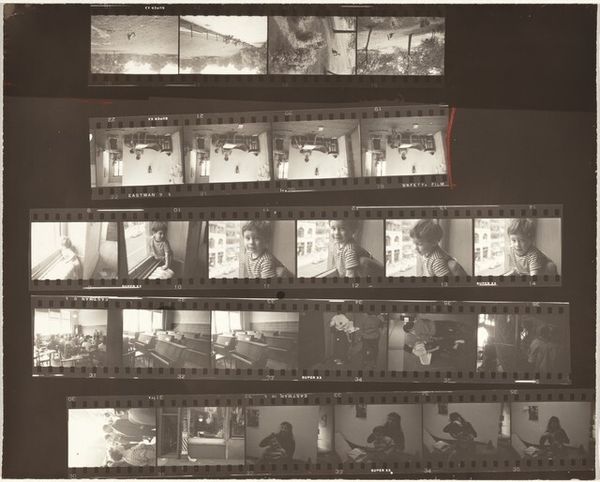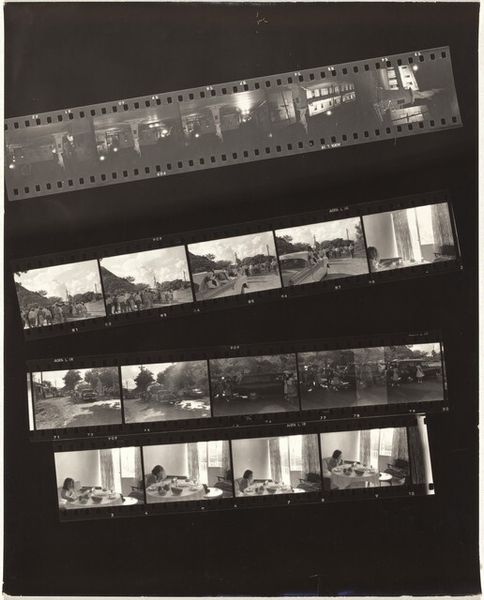
photography, gelatin-silver-print
#
film photography
#
wedding photography
#
street-photography
#
photography
#
gelatin-silver-print
#
monochrome photography
#
realism
#
monochrome
Dimensions: overall: 25.4 x 20.4 cm (10 x 8 1/16 in.)
Copyright: National Gallery of Art: CC0 1.0
Editor: Here we have Robert Frank's "Guggenheim 113--New York City" from 1955, a gelatin-silver print presented as the artist's original contact sheet. There's something stark and unedited about it, a raw view of city life, perhaps? What social narrative do you believe Frank was exploring here? Curator: Frank, as a Swiss immigrant, offered a critical outsider's gaze on 1950s America. These contact sheets give us a glimpse into his process of documenting a society grappling with post-war prosperity and underlying tensions of class, race and social alienation. Notice how he doesn't shy away from the ordinary, capturing mundane moments. How might his choices challenge the dominant, often idealized, imagery of the time? Editor: So, it's less about beautiful images, and more about…social commentary? Curator: Precisely. It challenges the manufactured reality of mainstream media. Frank focused on what was happening in the streets: the segregation, the economic disparities – a stark contrast to the American dream narrative. Consider also the visual hierarchy implied. The very presentation, the uncut roll, democratizes the image, giving all equal weight, refusing to prioritize. What effect does that have? Editor: I guess that shows even throwaway pictures may still show something important about our culture, and our lives? Maybe even accidents, too. Curator: Exactly. His work compels us to confront uncomfortable truths about power dynamics and social inequalities, which were deliberately sidelined in popular visual media of the day. Editor: So, by showing everything, he was really *saying* something. Curator: Indeed. And he encourages us to question whose stories are being told and, perhaps more importantly, whose stories are not. Food for thought, wouldn’t you agree? Editor: Definitely given me a lot to think about. Thank you.
Comments
No comments
Be the first to comment and join the conversation on the ultimate creative platform.
